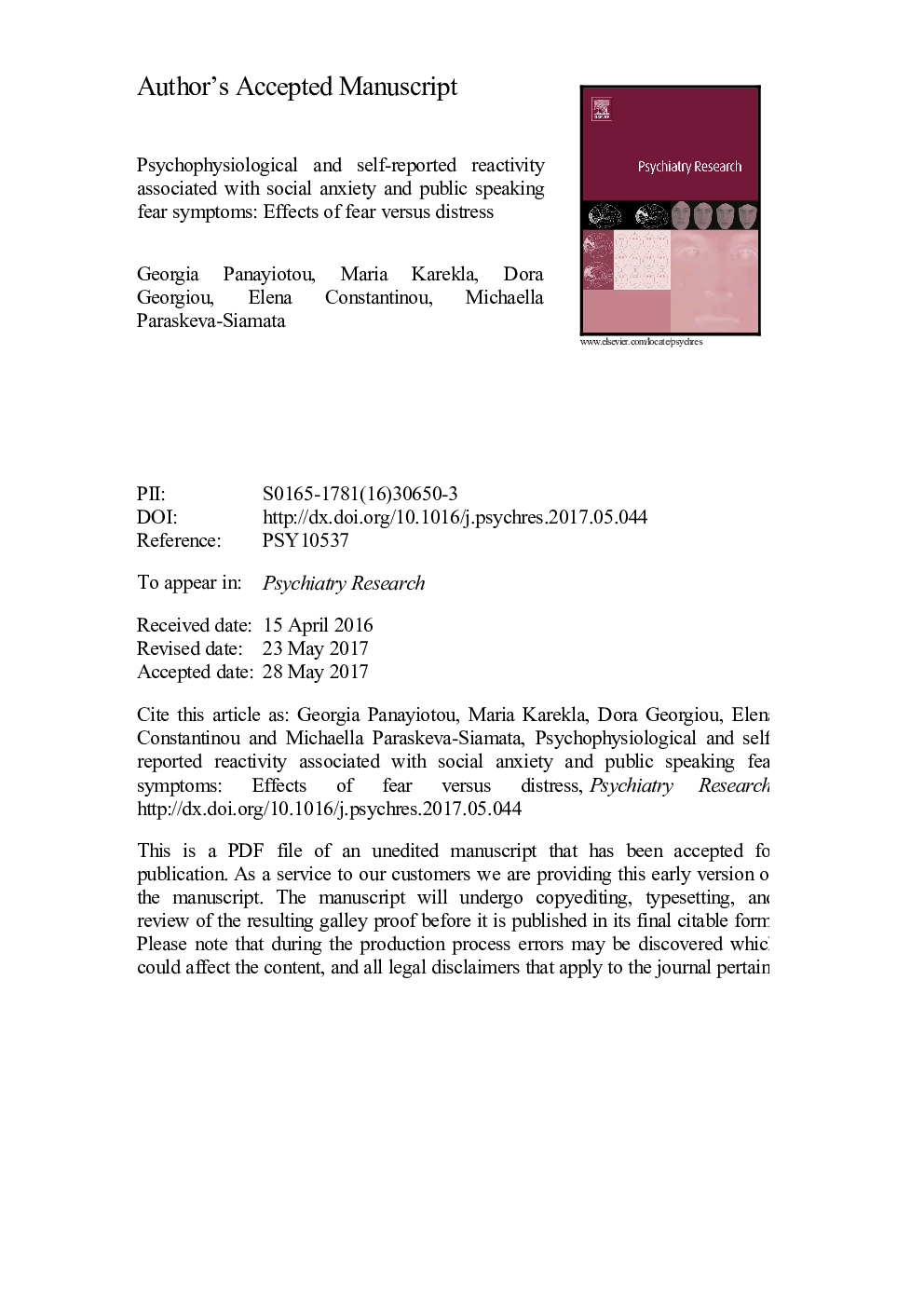| Article ID | Journal | Published Year | Pages | File Type |
|---|---|---|---|---|
| 4933205 | Psychiatry Research | 2017 | 41 Pages |
Abstract
This study examines psychophysiological and subjective reactivity to anxiety-provoking situations in relation to social anxiety and public speaking fear. We hypothesized that social anxiety symptoms would be associated with similar reactivity across types of imaginary anxiety scenes and not specifically to social anxiety-related scenes. This would be attributed to co-existing depression symptoms. Public speaking fear was expected to be associated with more circumscribed reactivity to survival-threat scenes, due to its association with fearfulness. Community participants imagined standardized anxiety situations, including social anxiety and animal fear scenes, while their physiological reactivity and self-reported emotions were assessed. Findings supported that social anxiety was associated with undifferentiated physiological reactivity across anxiety-provoking situations, except with regards to skin conductance level, which was higher during social anxiety imagery. Public speaking fear was associated with increased reactivity to animal phobia and panic scenes. Covariance analyses indicated that the lack of response specificity associated with social anxiety could be attributed to depression levels, while the specificity associated with public speaking fear could be explained by fearfulness. Findings highlight the need to assess not only primary anxiety symptoms but also depression and fearfulness, which likely predict discrepant reactions of individuals to anxiogenic situations.
Related Topics
Life Sciences
Neuroscience
Biological Psychiatry
Authors
Georgia Panayiotou, Maria Karekla, Dora Georgiou, Elena Constantinou, Michaela Paraskeva-Siamata,
